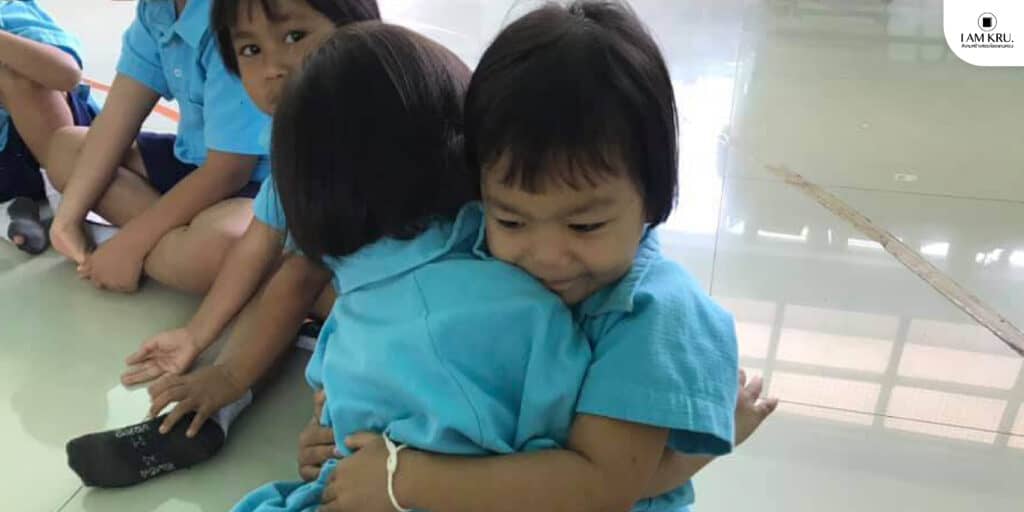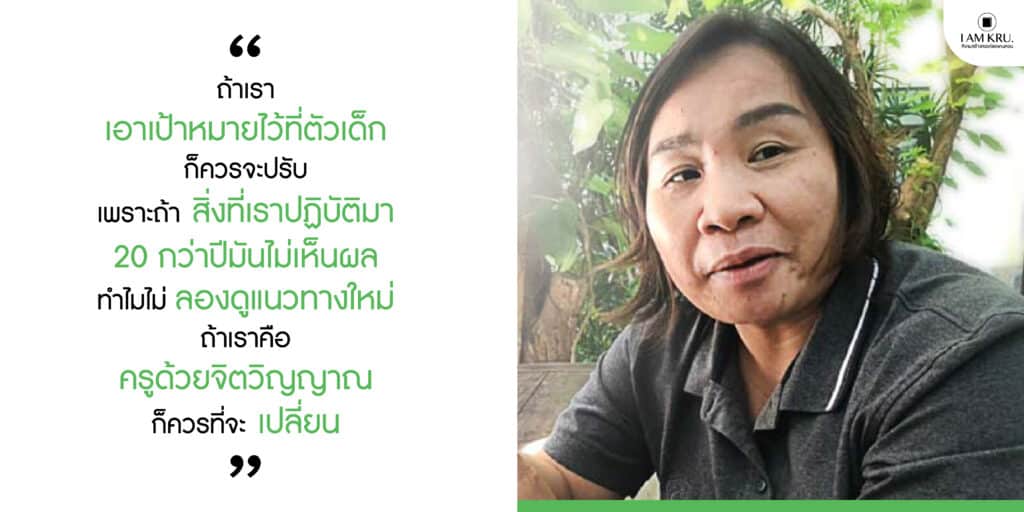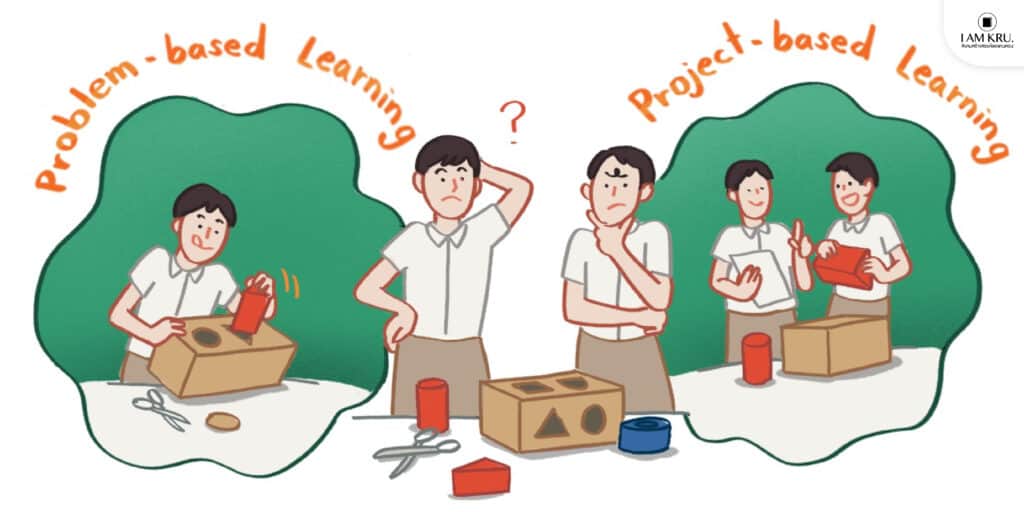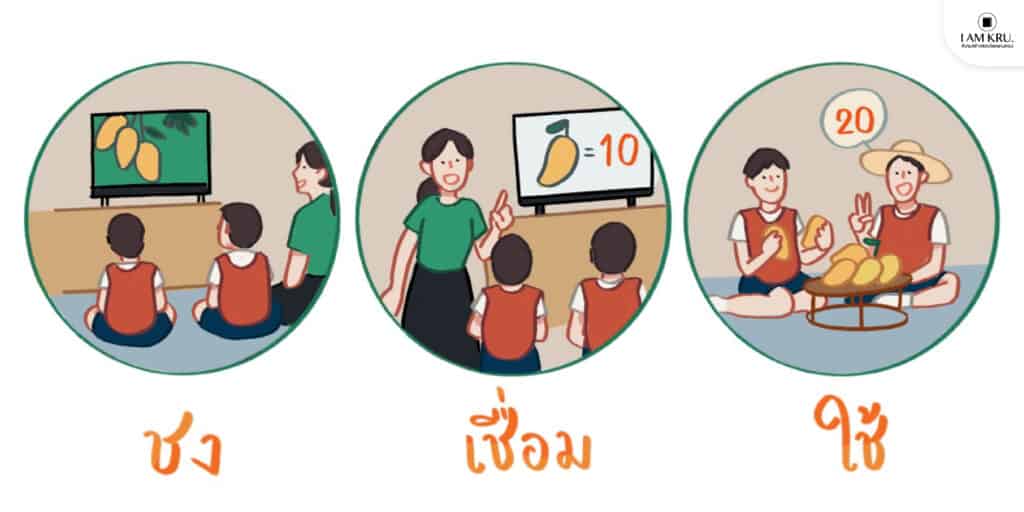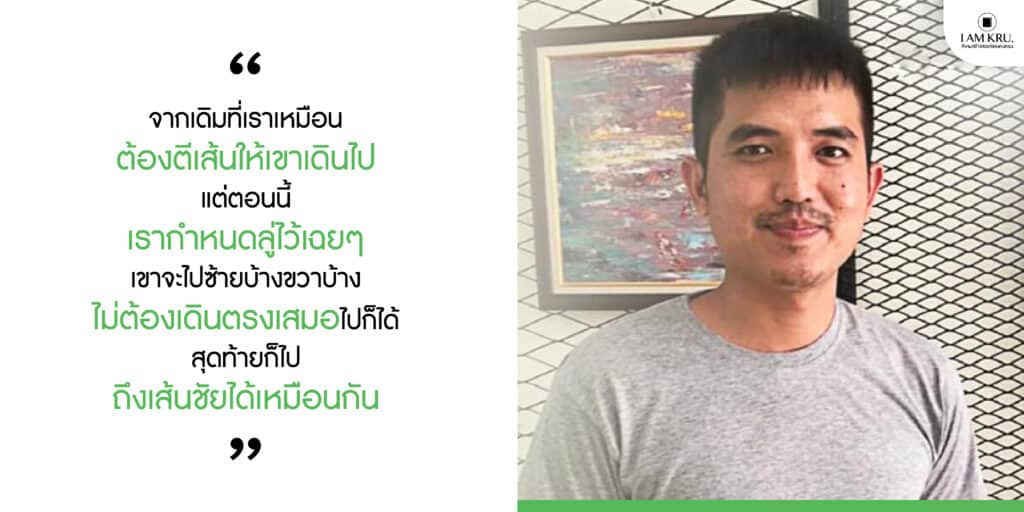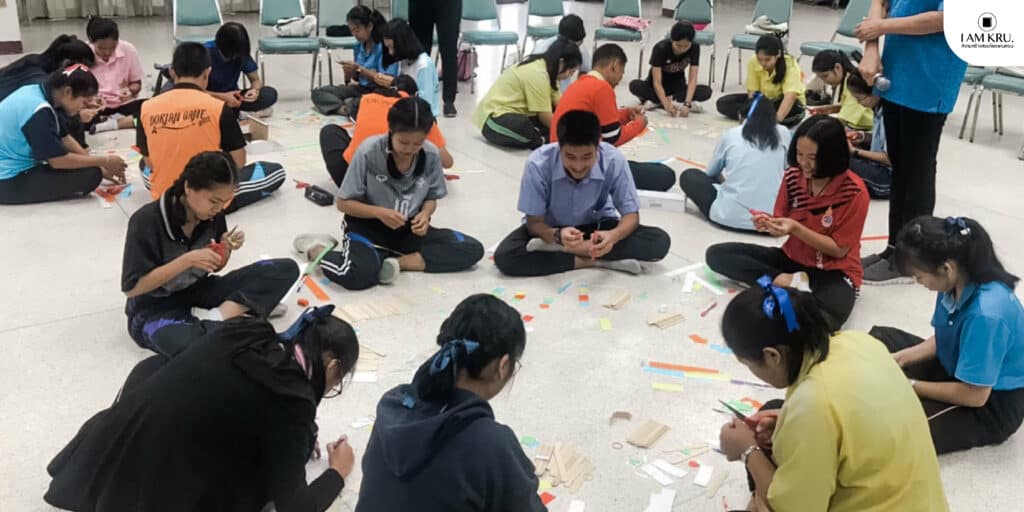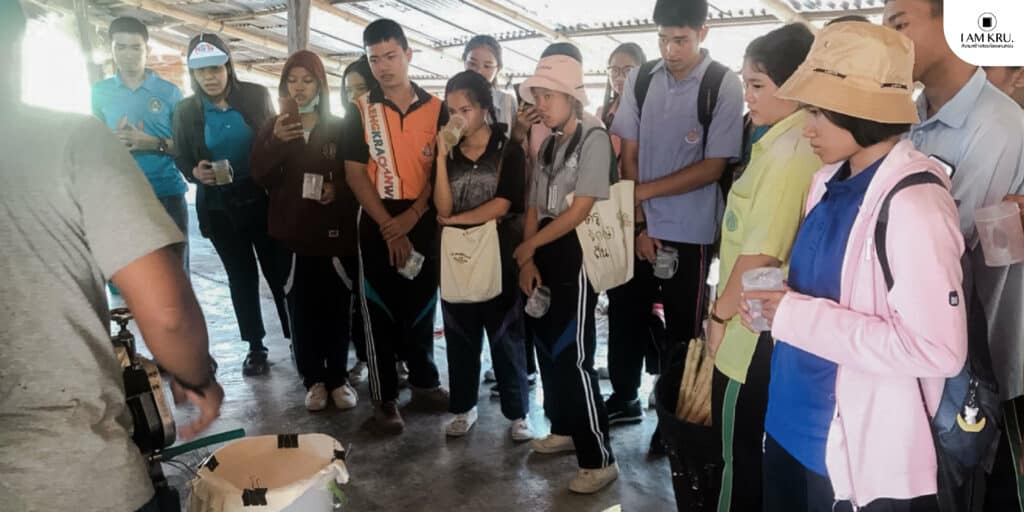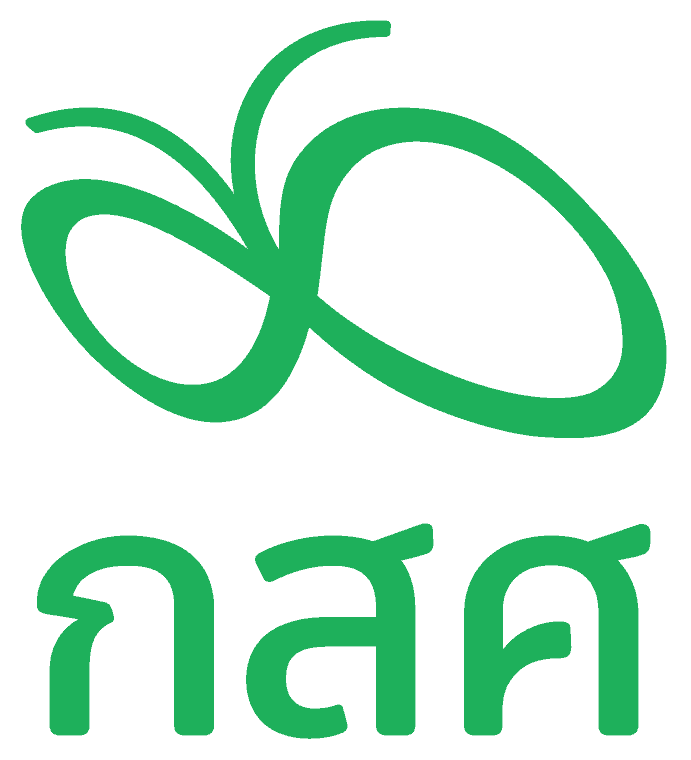“The shift to remote teaching has opened up opportunities to develop the use of technology and innovative thinking onhow to ensure that every child can learn
and do so effectively,””
says Sompit Kobjitti, the director of Ban Yok Krabat School in Samut Sakhon Province.
From late December to March 2021, schools in Samut Sakhon were ordered to cease on-site teaching due to the intensifying COVID-19 pandemic that nearly spanned the entire province. Consequently, schools had to adapt and find ways to conduct classes even when teachers and students were not in the same location, utilizing various self-learning media and finding ways to engage students without the physical presence of a teacher. This article compiles 5 methods from 5 schools in Samut Sakhon, which are part of the continuous educational quality improvement project, or TSQP by the Equitable Education Fund (EEF), for other schools seeking teaching inspiration during times of necessary separation.

Discovering New Learning Models to Keep Things Interesting with PLC
The school closure for Wat Mai Nong Pa Ong Schoolin Samut Sakhon was seen as an opportunity to find new learning methods through the process of Professional Learning Communities (PLC). Here, the TSQP coaching team, school administrators, and teachers exchange learning experiences every week on new innovations and essential skills that children need to acquire.
Ratchaneeporn Bunsak, the director of Wat Mai Nong Pa Ong School, mentioned that the prolonged school closure caused significant physical and emotional exhaustion. However, the students saw it as a new dimension of learning. They were excited to learn in formats different from the traditional classroom setting. The teachers used the PLC process weekly to explore new teaching methods. All teachers cooperated well, ensuring that activities were related to the learning content. It was noticed that some students, who were previously disinterested in learning, became diligent when it came to online classes, suggesting that the learning format indeed affects student engagement.
A significant issue with online learning was internet connectivity and communication tools. Many students lacked the necessary equipment for online learning, so Watmainongpaong School grouped nearby students to study together, striving to provide every student and every household with equal access to learning opportunities.
Regarding the changes that occurred, Director Ratchaneeporn noted that during the COVID-19 crisis, teachers became more active, motivating themselves to seek out new things to develop themselves and share with their students. This crisis has highlighted the unity, patience, and dedication of school personnel working together to ensure that children can continue their education, albeit not perfectly.

Using Television as a Medium to Reach Remote Students
For students unable to access the internet, “learning through television” has become a crucial channel for continuous knowledge enrichment.For instance, the Cooperative Kasikum Cherng Talay School in Phanthai Norasing, Mueang Samut Sakhon District, Samut Sakhon Province, uses television along with learning sheets and Learning Bags filled with educational and fun content.
Supattra Navik, Director of the Cooperative Kasikum Cherng Talay School,states that the first encounter with COVID-19 led the school to survey children’s readiness to use online media. The school used this data to adapt and establish a model for education, starting with lessons through DLTV, coupled with assigning homework for students to complete at home. Teachers would follow up on students’ work daily, communicating directly with parents through group chats. The teachers kept records of student attendance, noted any issues encountered, and devised immediate solutions.
“The school created the ‘Agriculturalists Channel,’ a platform for teachers to disseminate knowledge and teach children to make video clips, which are then shared via group chats or the school’s Facebook page. This TV channel also serves as a means to exchange educational content with other schools in Samut Sakhon facing similar issues. Importantly, the school adjusted the Learning Boxes received from the EEF into Learning Bags, distributed to students from grades 1-6. The Learning Bags include a set of learning materials, assignment problems, and tools for creating projects, which students return weekly to receive a new bag. Overall, teachers, parents, and students have adapted well to the crisis. Even though the work, homework, or feedback returned may not be perfect as when schools are open, everyone tries their utmost to cooperate fully with the school,”
said Director Supattra.
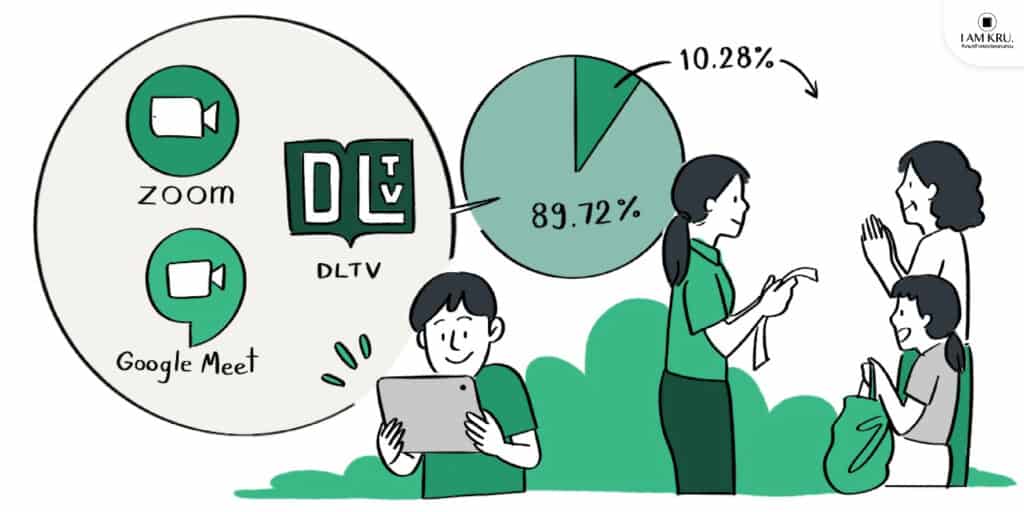
Real-time Communication Enhances Online Learning
Schools that have assessed their students’ capabilities and found that over 80% can access online learning should organize virtual classrooms that allow real-time interaction between teachers and students. It’s also essential to prepare a contingency plan for students who might face emergencies or cannot access online classrooms.This was an approach well-prepared byBan Bang Ping Schoolin Na Di, Mueang, Samut Sakhon Province in the past term.
Rattiya Kalong, Director of Ban Bang Ping School,shared that they managed online teaching via programs like ZOOM, Google Meet, and DLTV, reaching over 89.72% of their 400 students. Only 10.28% could not access the classes, for whom the school arranged for parents to collect and submit assignments at the school or had teachers in the vicinity deliver and collect work. They also utilized the Learning Box from the Equitable Education Fund (EEF), containing exercises and assignments covering all subjects, ensuring that even students who couldn’t access online education could continue learning while the school was closed.
“Most parents were very cooperative and agreed with the school. Everyone realized that this crisis was a close-to-home reality, and all of Samut Sakhon was severely affected by being a red zone. Teachers and parents were eager to help children continue learning, tracking their progress, and resolving any issues that arose. The students accepted the educational process organized under the TSQP, which uses innovative tools like the Learning Box to create enjoyable learning activities, featuring a variety of materials and teaching methods that encourage open-mindedness and creativity,”
said Director Rattiya.
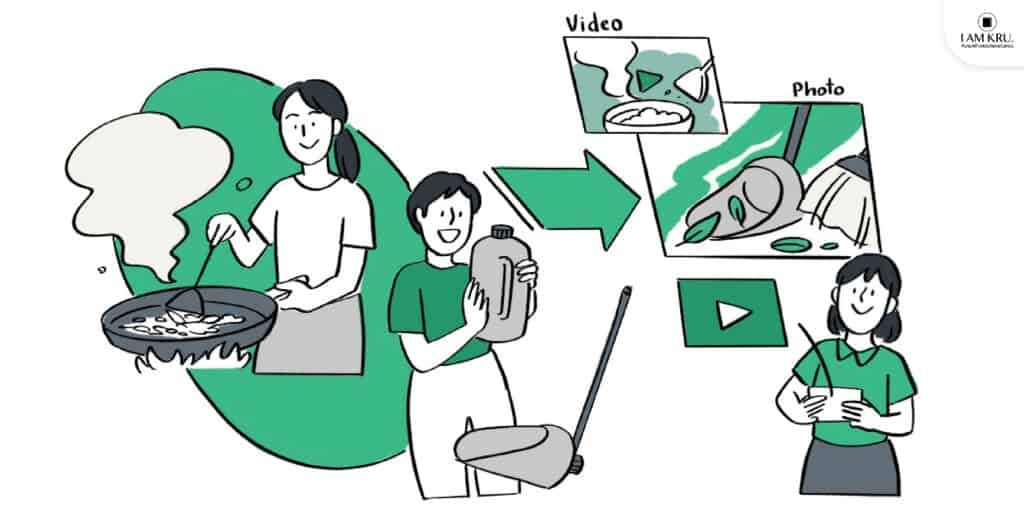
Maker Space: A Realm of Activities for Fun Learning
For online classroom learning to be effective, the content must be useful and engaging; otherwise, students are likely to lose interest. Teachers must design online classroom activities that are engaging. An example of such a classroom is theMaker Space project, which students at Ban Yok Krabat School eagerly participate in and look forward to engaging in activities with their teachers and peers.
Sompit Kobjitti, the Director of Ban Yok Krabat School in Samut Sakhon Province, explains that the Maker Space project involves a weekly schedule of activities where students decide what they want to do based on their interests and environment. The activity classroom is divided into six sections, allowing students to choose any room they wish, such as cooking or crafting. Students submit their work in the form of photos or video clips. This teaching method gives teachers the chance to develop their use of technology and creatively find ways to make learning as effective as possible, such as submitting work via video clips or conducting online exams. Overall, teachers have become increasingly enthusiastic.
“Despite the obstacles encountered in the current teaching arrangements, such as not all families being ready in terms of time and tools, our teachers will not leave anyone behind. We will reach all 342 students. If anyone is missing, the teacher will go to their home to deliver and collect worksheets,”
said Director Sompit.
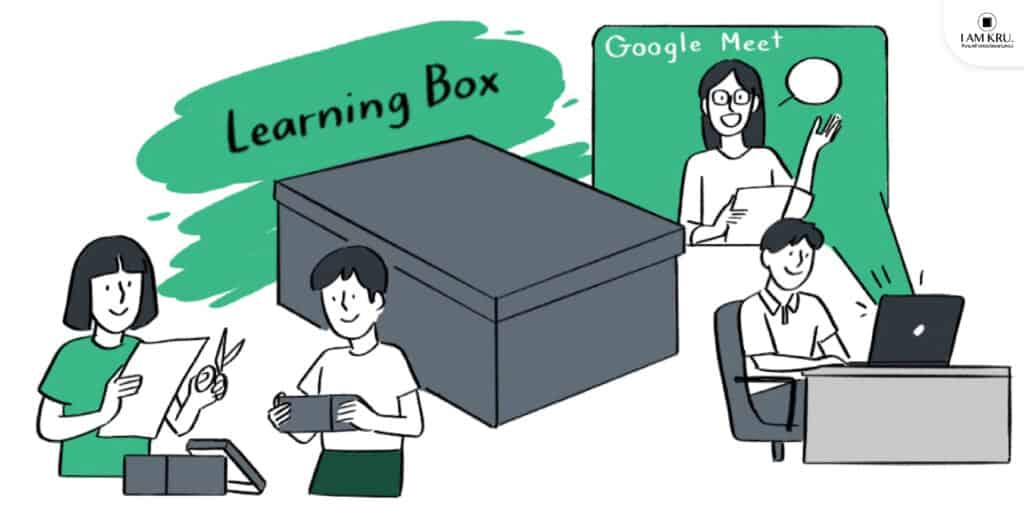
Hands-on Teaching Reaches Every Student, Every Household
No matter how sophisticated the tools and equipment for teaching are, the primary focus of online learning should be the “students” who are far from their teachers. Phasita Chiangphalert, a teacher atWat Patchantaram School in Samut Sakhon Province, discusses the school’s teaching approach during the new wave of the pandemic. The school utilized a ‘hands-on’method, involving worksheets where teachers would record teaching clips and share them with parents through Line groups. For grades 4-6, online teaching through Google Meet was supplemented, with classroom teachers following up on the students’ progress, except for those who were not convenient to learn online, for whom additional worksheets were provided.
“The Learning Box from EEF greatly aided teaching, but as there were fewer boxes than students, we had to split and repack the contents to match the number of students. This was practically useful for many subjects. The advantage of education during this period is that children have their own thoughts; they are fun, free, and can choose their learning time. This group tends to study around 10 AM until the afternoon. Some classes asked to study in the evening and responded well, especially the secondary students. For primary students, while there is excitement, the attendance rate is still only about 50% due to the lack of parental supervision,” says Teacher Phasita.
Teacher Phasita notes that a significant challenge is that as children grow older, parents tend to take them to work, assuming that since schools are closed, they should help with selling vegetables or working in salt farms. Therefore, it needs to be explained that even though the school is closed, the children still need to learn and fill their knowledge. The school must continue to make efforts to promote understanding.
The Learning Box created by EEF is very beneficial for the activities of the five exemplary schools and for other schools in the TSQP project or those cooperating with EEF, providing teaching tools for times when teachers and students are distant. Each school’s difference lies in how they attract students’ interest and monitor each child’s progress. Most schools have done well, but remote learning is not suitable for every student or household. Classroom learning is still the best form because it provides a conducive environment with teachers and peers to support learning. Thus, all schools must work together to control the situation and prevent another pandemic outbreak within the school.
86
- COVID-19, Kasikum Cherng Talay School, Learning Bag, Learning Box, Maker Space, PLC, Professional Learning Community: PLC, TSQP, รัชนีพร บุญศักดิ์, รัติยา กาหลง, สมพิศ กอบจิตติ, สุพัตรา นาวิก, โครงการพัฒนาครูและโรงเรียนเพื่อยกระดับคุณภาพการศึกษาอย่างต่อเนื่อง (TSQP), โรงเรียนบ้านบางปิ้ง, โรงเรียนบ้านยกกระบัตร, โรงเรียนวัดปัจจันตาราม, โรงเรียนวัดใหม่หนองพะอง
- COVID-19, Kasikum Cherng Talay School, Learning Bag, Learning Box, Maker Space, PLC, Professional Learning Community: PLC, TSQP, รัชนีพร บุญศักดิ์, รัติยา กาหลง, สมพิศ กอบจิตติ, สุพัตรา นาวิก, โครงการพัฒนาครูและโรงเรียนเพื่อยกระดับคุณภาพการศึกษาอย่างต่อเนื่อง (TSQP), โรงเรียนบ้านบางปิ้ง, โรงเรียนบ้านยกกระบัตร, โรงเรียนวัดปัจจันตาราม, โรงเรียนวัดใหม่หนองพะอง
Writer

- เอื้อการย์ โรจนจิรไพศาล (มะแม้ว)
- นักเขียนผู้หลงรักการผจญภัยในเมือง ปรัชญาในชีวิตจริง และการไป Cafe Hopping ทั่วทุกมุมเมือง
